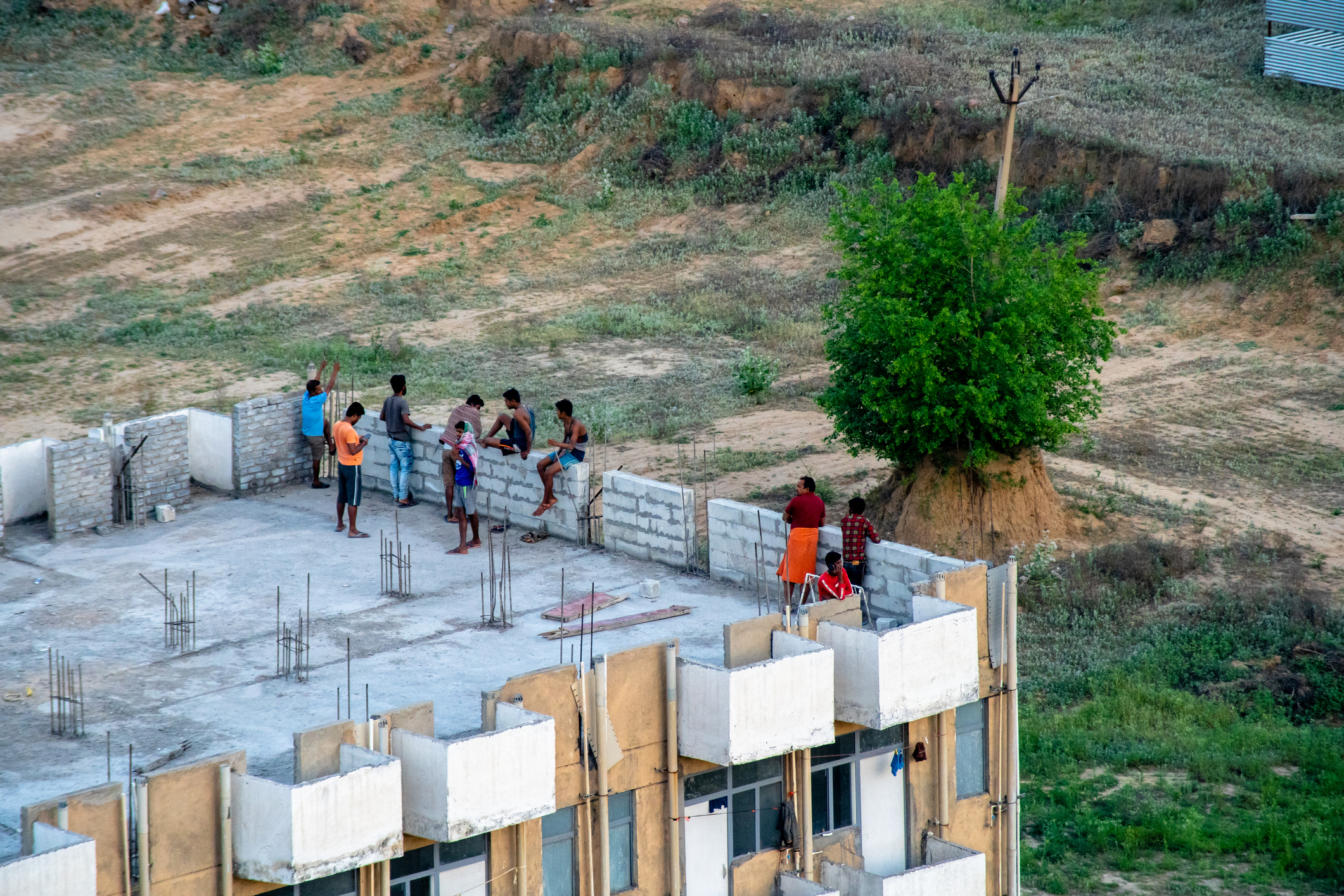This blog is part of the COMPAS Coronavirus and Mobility Forum.
The lockdown imposed by the government of India in March forced Delhi residents to stay put in their housing quarters. Since the pandemic is class-blind, the lockdown is supposed to restrain everyone equally. Be it the rickshaw pullers of Chandni Chowk, affluent residents of Vasant Vihar, or traders of Karol Bagh, the confinement order spared none. Never in the recent memory of India, has a government order pursued the disciplinary equality with such a singularity of purpose. But this mobility prohibition brought upon the workers in the shantytowns of Delhi an economic devastation vastly different from the experiences of others.
Shantytowns have obscure existence in Delhi’s urban planning records, maps, census and land surveys[i]. They are variously called, slum, squatter settlement, or jhuggi. Their origins also vary: labour migration, and population resettlement, or squatter occupations.[ii] Typically overcrowded and home to marginal workers, they are perceived as an illicit underbelly of the city and therefore subject to demolitions[iii]. Shantytowns are Delhi’s local hubs of labour supply where workers can be hired for subsistence level wages for jobs in residential districts, markets and industrial zones.
Why did the government’s mobility prohibitions leave the shantytowns in dire economic hardship? A large number of their dwellers depend on what Biao Xiang calls mobile livelihoods. Housemaids working in Vasant Vihar homes, cleaning workers on contract, roadside vendors, scrap collectors and transport workers are among the myriad registry of such livelihood seekers. There are also masonry workers, carpenters, and sales clerks. These are forms of manual labour which require the highest possible performance on a daily basis and employer’s personal trust. Absence due to contingencies are seldom tolerated.
The daily life of a shantytown dweller resembles that of an itinerant, for whom livelihood comes from sojourning. The lockdown has converted the shantytowns into a bounded neighbourhood that brought to an abrupt end the dwellers’ wandering and wage gathering.
For many workers, mobility is the most crucial condition for seeking work. Small crowds of wage seekers congregate on roadside pavements in the morning hours, squatting or standing in small groups. These are South Delhi’s labour chowks (temporary recruiting spots) for coolies, mistrys, masonry workers, or transporters. Labour contractors come to enlist workers on a daily basis and transport them to different work sites. All of the workers have come from the nearby shantytowns.
But now, lockdown regulations ban any gathering and hence make these recruiting spots illicit to operate. Unlike many other workers who have a long term acquaintance with an employer or a labour contractor, many of the workers in squatting spots are not personally known to any employer.
The lockdown has disrupted what can be described as the urban labour supply network. In Delhi most industries rely on the labour contractors mentioned above for supplying workers, particularly for manufacturing and construction activities. Based on personal contacts, this network has been the lifeline for migrant workers in finding work. Here the labour contractor can be thought in terms of a mobility enabler who initiates a rural wage seeker to begin his cityward journeys. In Delhi, labour contractors provide temporary accommodation in jhuggis made up of shanty tenements near the worksites. Admission to these lodgings is usually timebound, for the duration of the work. When a project is over, the contractor moves the migrant workers to other worksites where they will be employed. Temporary lodging and wages are verbally assured to the migrants. The lockdown has left the labour contractor stranded and powerless. Since the manufacturing and construction activities have come to a halt, the industry recruiter has cut off the labour contractor from all transactions. The contractor in turn absolves himself of all assurance given to the workers earlier, from personal and economic obligations such as lodging and wages. This leaves the migrant workers on their own without a guide and results in the complete disruption of the network.
Mobility prohibition imposed through the lockdown has also incapacitated workers in the goods transportation sector. A glimpse into a normal business day in the furniture markets of Munirka, Panchukia Road, or Kirti Nagar reveals a vivid account of how moving goods from showrooms to customer homes is a key source of livelihood for marginal workers. Each showroom, depending on their sales volumes as well as service standards, have transport workers on call. In some case, it will be ‘coolies’, who labouriously transport a wooden shelf, a steel almirah or a washing machine in his improvised peddle rickshaw with an attached carriage. Upscale stores deliver goods to their customer homes in a tempo van, a small truck. Since this transportation is arranged by the stores, the workers do not have much say in the amount charged on the transport. They simply depend on the stores for work and pay.
Hunger and sickness lurk in the narrow lanes of shantytowns. At the best of times, working-class families scrape through. Someone in the family manages to become a contractors’ coolie, a housemaid, a mistry or street vendor. But in lockdown, there is no escape. It will be a long wait before the recruiting spots are revived, the contractors come back, the local stores re-hire, and housemaids can re-enter their employer’s apartment. But to survive until then is an altogether different struggle.
T G Suresh is currently a Fulbright - Nehru Fellow at the South Asia Program at Cornell University. He is an Associate Professor at the Centre for Political Studies, Jawaharlal Nehru University, New Delhi.
References
[i] Ghertner, Asher, (2010) “Calculating without numbers: aesthetic governmentality in Delhi Slums”, Economy and Society, 39:2, 185-217
[ii] See Dupont, Veronique, Emma Tarlo and Denis Vidal (eds.), Delhi: Urban Space and Human Destinies (Delhi: Manohar. 2000)
[iii] Menon-Sen, Kalyani and Gautam Bhan . Swept off the Map: Surviving Eviction and Resettlement in Delhi. (New Delhi: Yoda Press, 2008)
